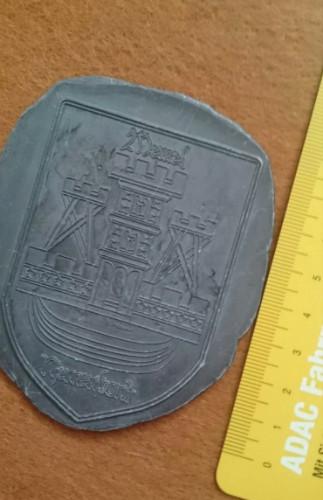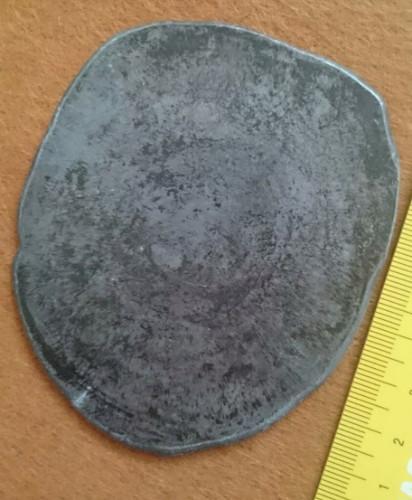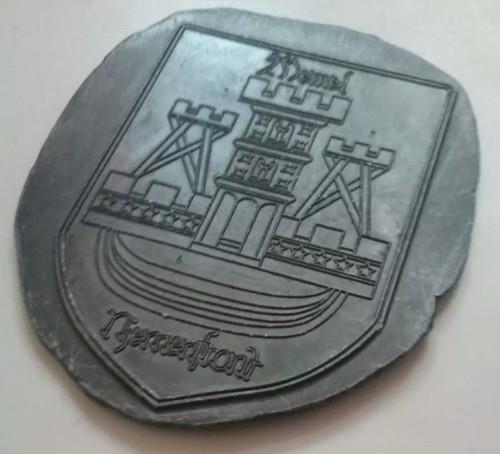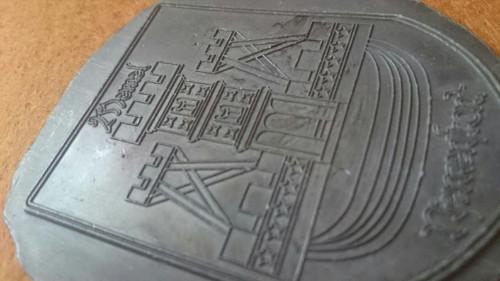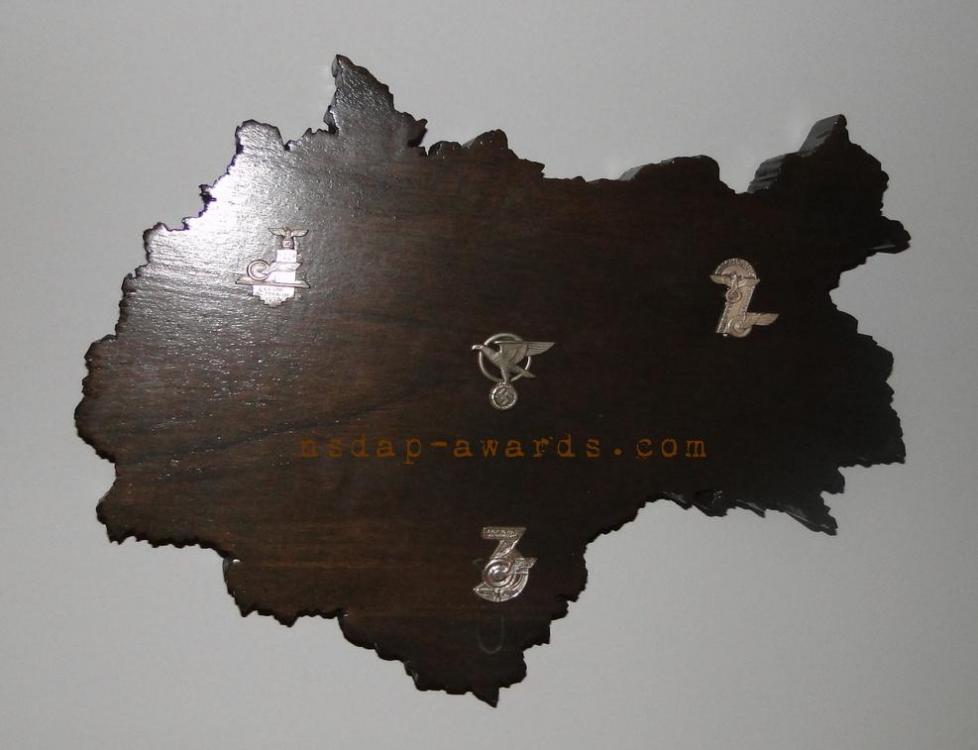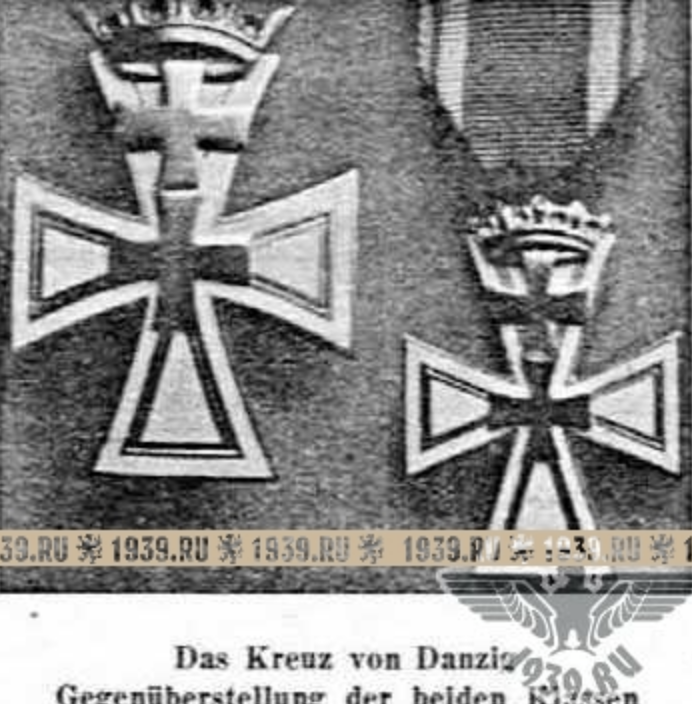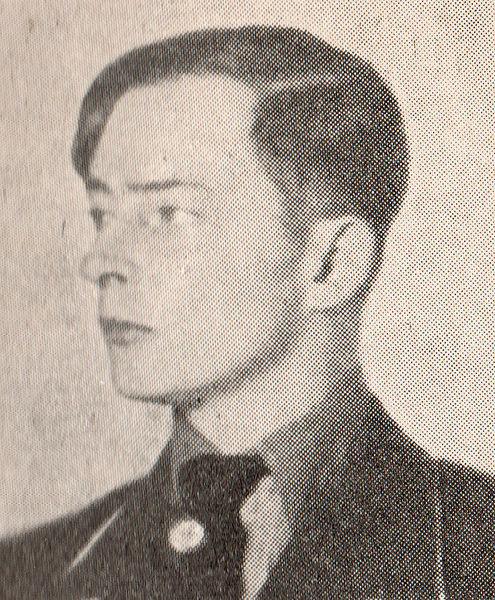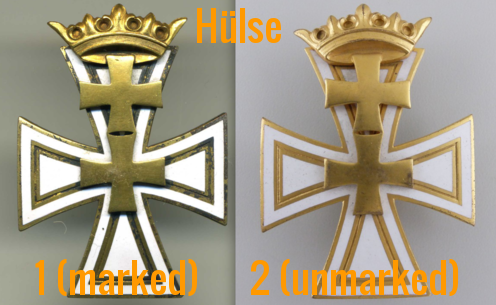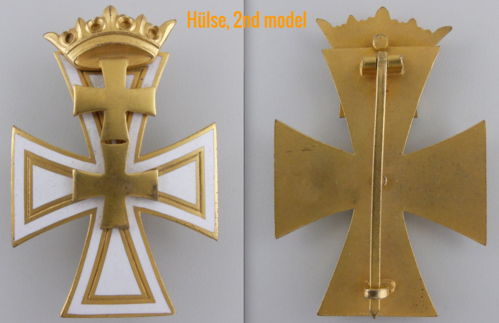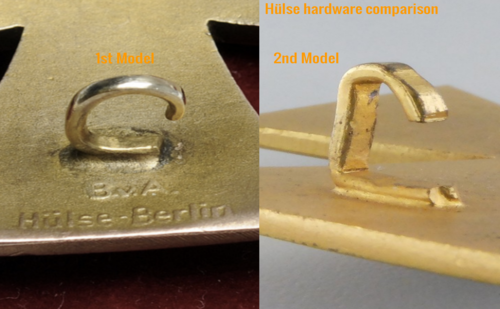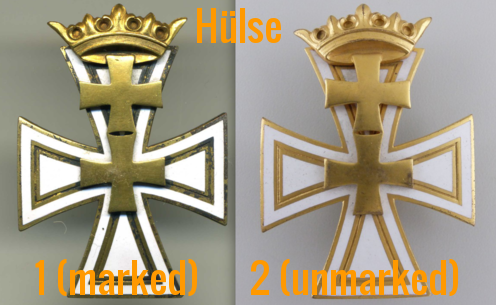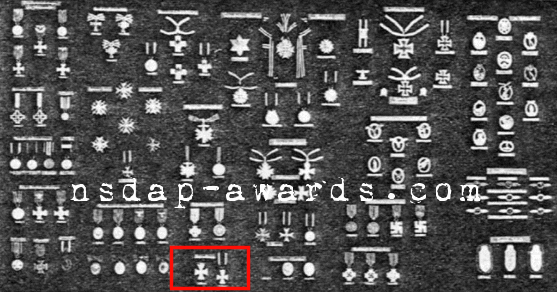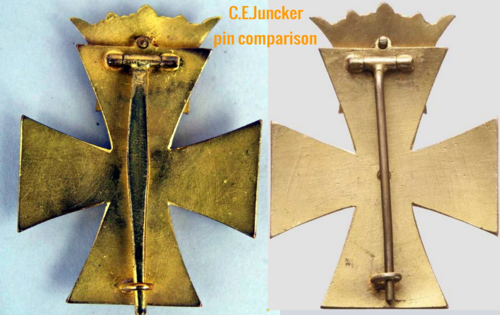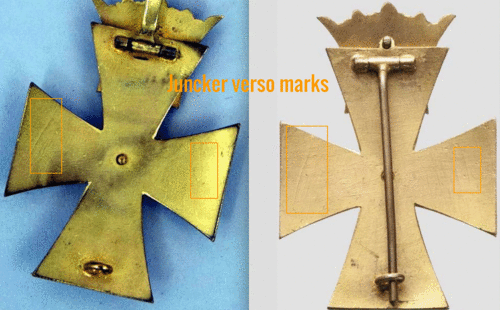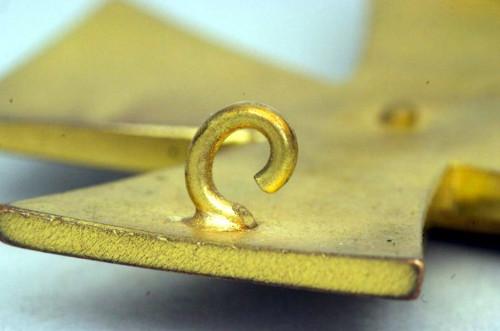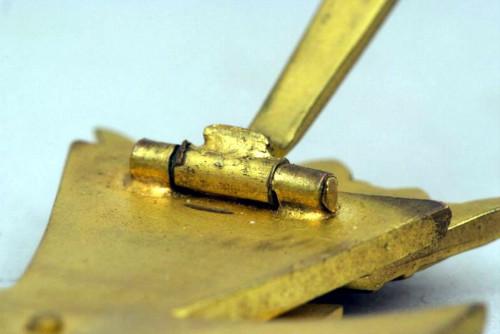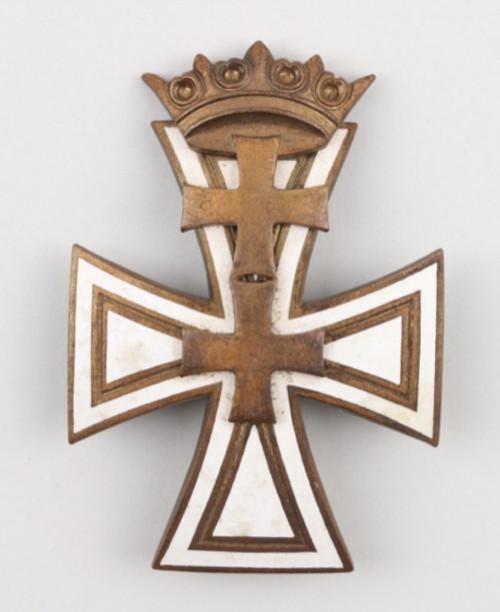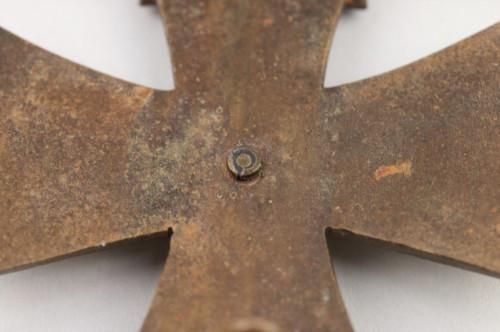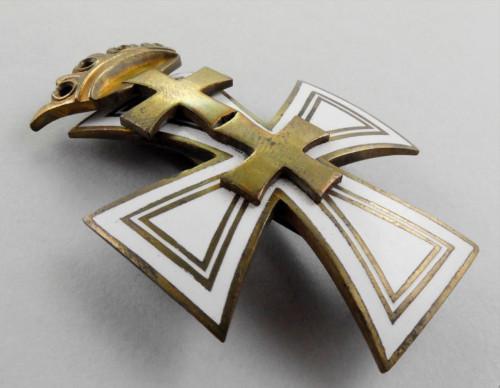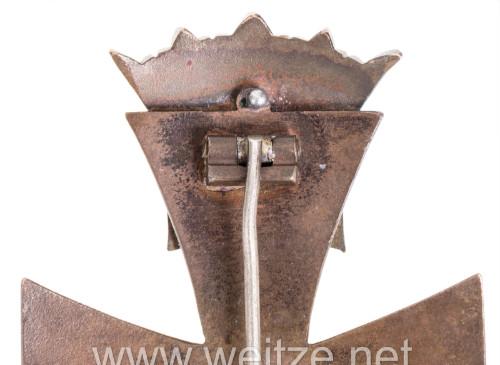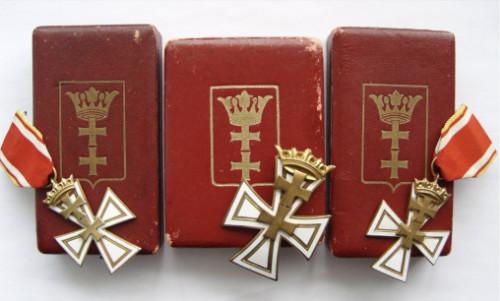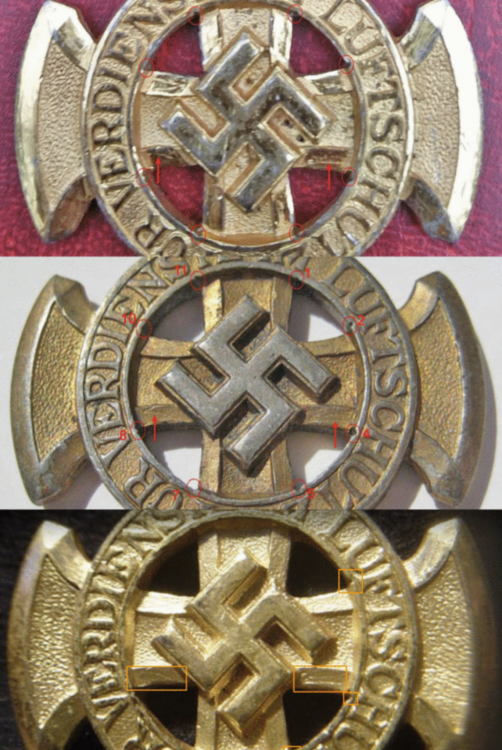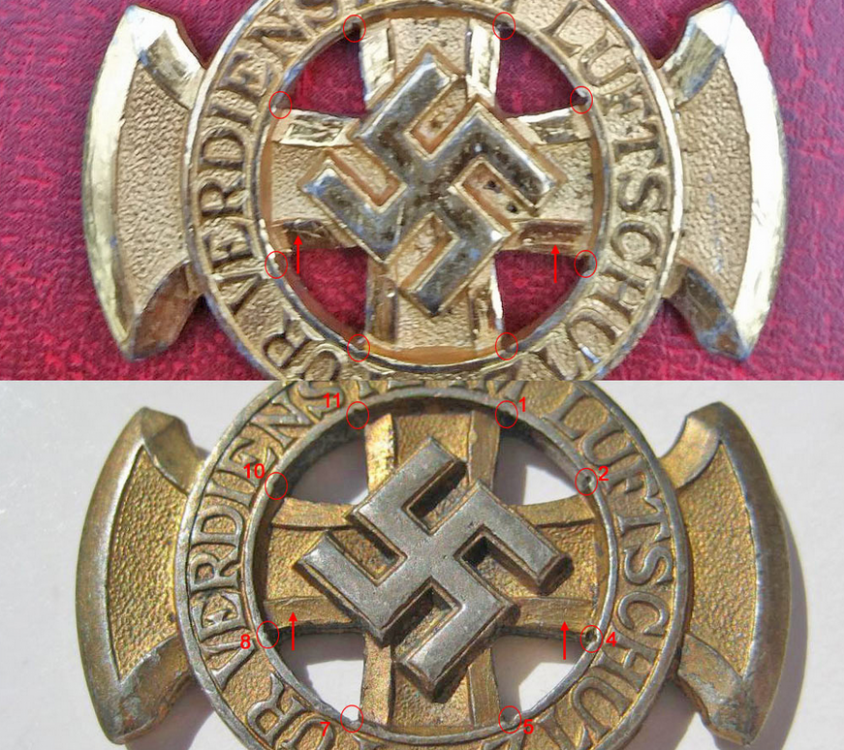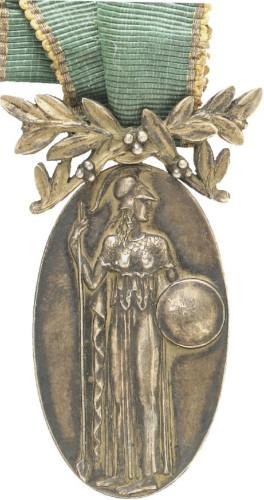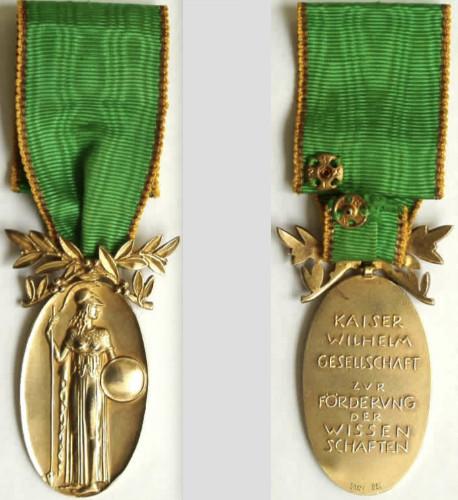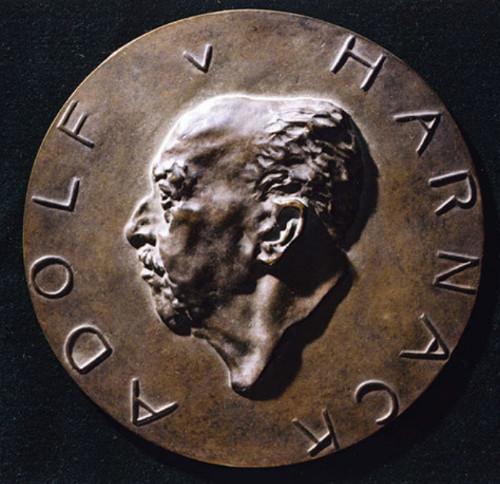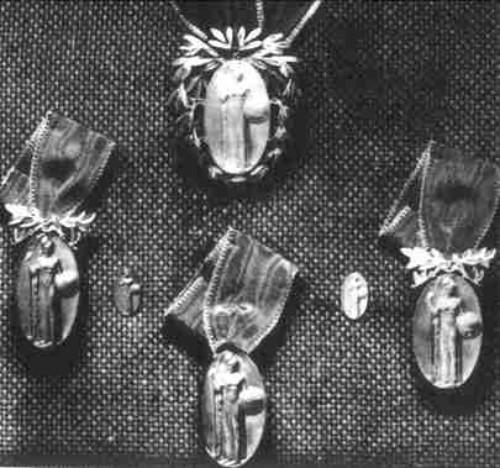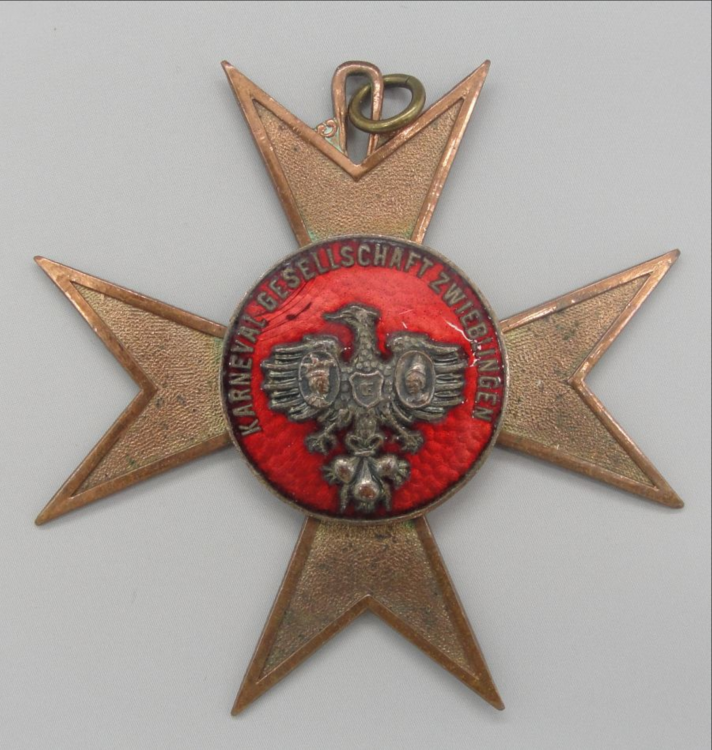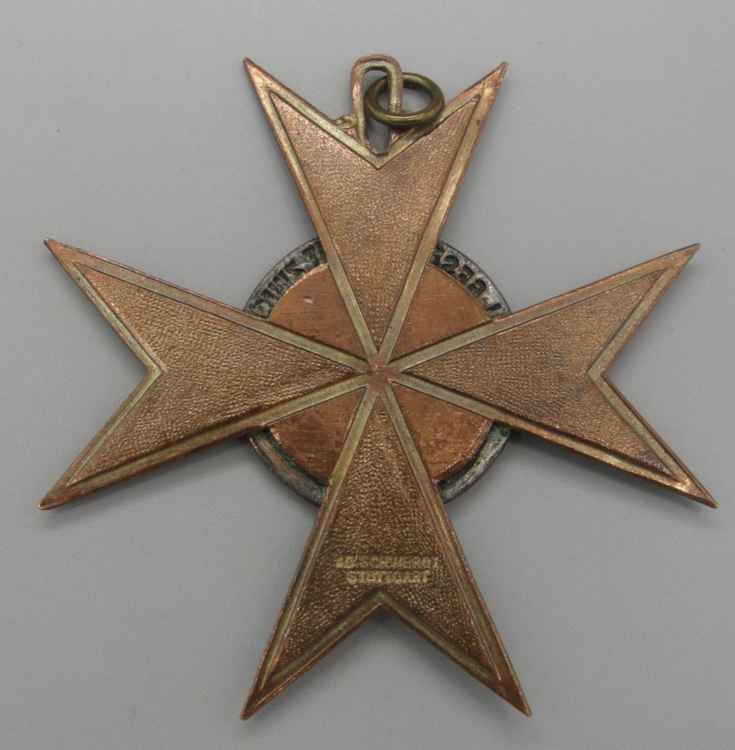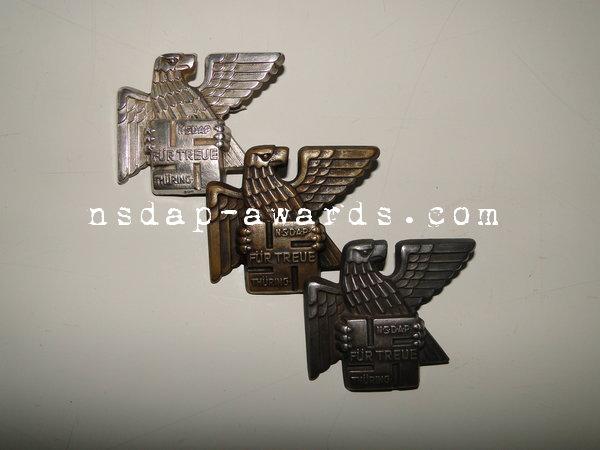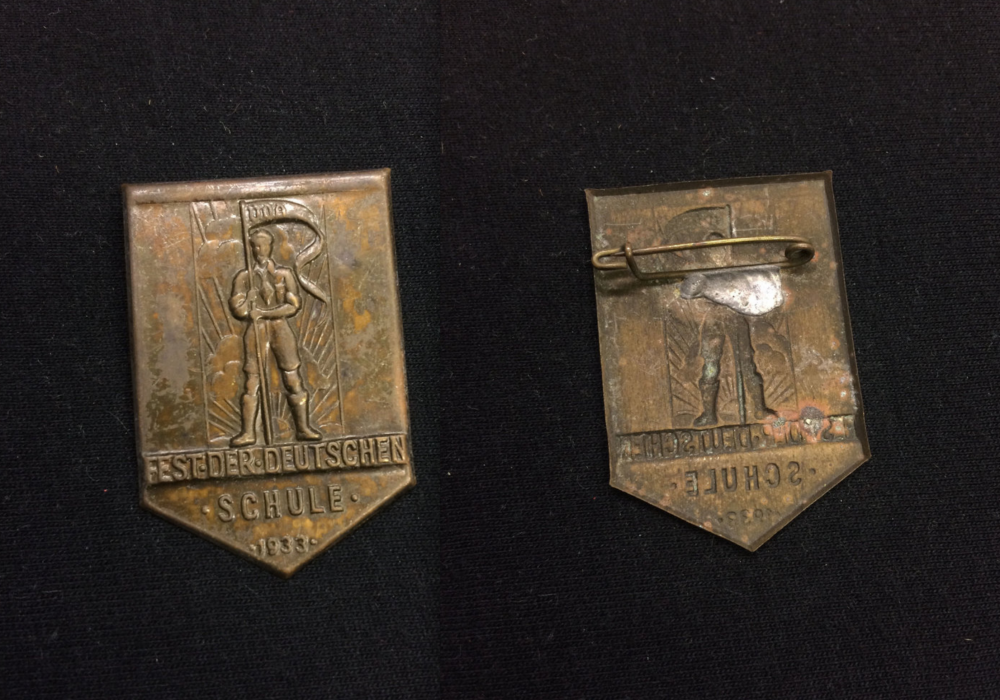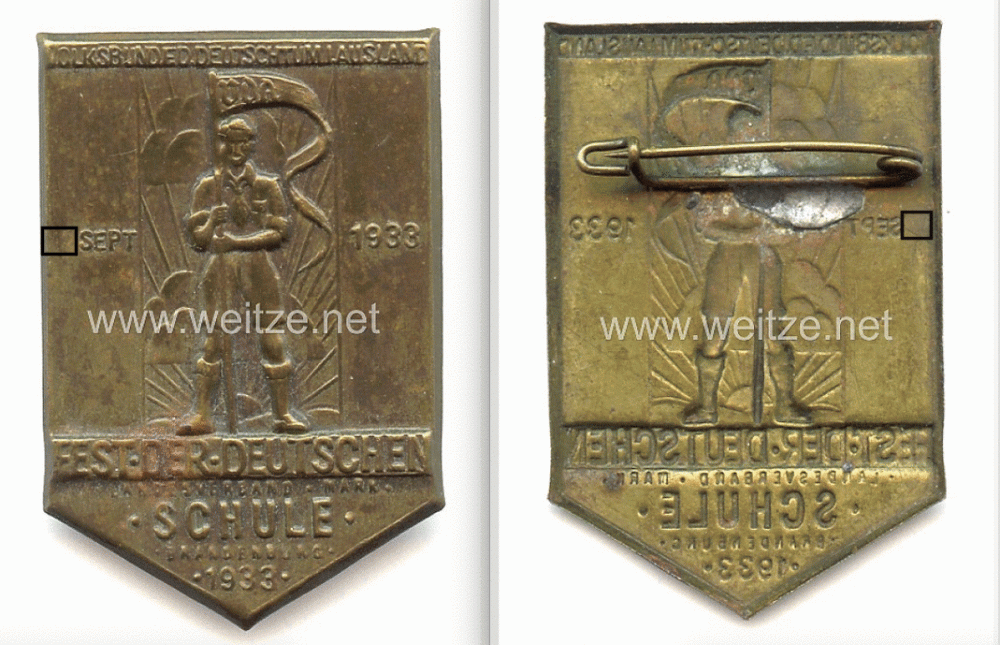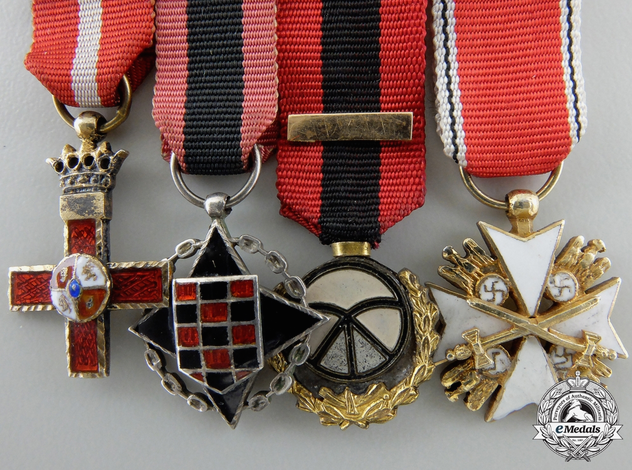-
Posts
190 -
Joined
-
Last visited
-
Days Won
2
Content Type
Profiles
Forums
Blogs
Gallery
Events
Store
Everything posted by Matthew Macleod
-
Here's a shorter version of something I've been working on for a bit regarding Danzig Crosses. This one pertains to the 1 class of the award. Hope you find it useful: Danzig Crosses are some of the awards that most collectors came across at some point in their travels, but know little about, other than their general shape and few basic facts. That's in my opinion, due to the fact that there's just not much info on those, which is too bad as they are wonderfully designed, historically important decorations that were seen displayed by many personalities of the 3rd Reich era. Hopefully we can add few facts here that will make collecting those a little less of an enigma. Firstly- they were awarded by then Danzig's Head of State- Gauleiter Albert Förster- for services towards the construction of the NSDAP in the Free City and, later on, District (Gau) of Danzig. It means that Danzig Crosses were in fact political awards rather than civil ones. Their award document confirmed their purpose as such. The awards were instituted on August 31, 1939, as two grade decoration that was designed in the form of a cross by a stage designer, artist and architect Benno von Arent. The medals proved to be some of the rarest of 3rd Reich Decorations- it's estimated that less than 100 awards of the 1 class, and around 250 of the second class crosses were awarded. Since the awards were considered those of the (by now banned) Nazi Party, the Danzig Crosses were not included in 1957 decree authorizing former 3rd Reich Awards to be made available for their recipients. That said, there are stories of Danzig Crosses being re-struck on original tooling post war by one of their original makers, a Berlin Jeweller Hülse. Like every other award of the period, those too, never stood a chance of escaping being reproduced post 1945, however any stories of them being re-manufactured by Hülse have so far not been proven beyond a doubt, and remain a story repeated in some collecting circles. Before we begin a physical dissemination of those awards and their minute differences, it is worth noting that there are approximately 30 known specimens that survived and are currently in the hands of private collectors, dealers, and various institutions worldwide, making the Danzig Crosses one of the rarest awards of the NSDAP. Pictures below: a period newspaper clipping mentioning the new awards and a picture of their designer, von Arent. Model 1: Hülse Berlin (marked) A literal benchmark for a 1st Class Danzig Cross. Certainly the most well-known version of it. Made by a Berlin based company of Hülse. It is the only version of this award that can be positively traced to the few original recipients, making this variant a definite official awarded type. It is also the most common version- if we can call it that- amongst awards of this rarity. Type 1 is also the only version of this award that can be positively tied to its well-known red issue case. Since their awards boxes prominently featured the name of their maker- Hülse Berlin, it is doubtful that other makers would use the same, Hülse marked cases. Especially considering the size, influence, skills and abilities of other players involved. That said, it is still unknown what, if any, cases, envelopes or sleeves were in use by other makers of this award. Like other original versions of this cross, this model was a tombak based, die struck produced piece. Featuring white enamel and gold gilt, it’s a two part, pinback award, assembled and held together by two rivets. Hülse used 2 different types of rivets on those awards: most feature hollow domed ones (soldered) but some also used round wire clips tightened and soldered to the back of the pins- similar to those used on early versions of Gau Wartheland badges. The rivets were installed, then filed/sanded to help remove the excess material. It also prepared the surface for the application of gold gilt. There has been some claims in the past that mention at least some of the Danzig Crosses being struck in silver as base metal. Out of 27 specimens documented here, none can be proven to be anything but brass based. Although Hülse produced both marked and unmarked variants, this marked type utilized a two piece die that consisted of reverse part being engraved with designer/maker’s name. It is why these crosses feature a stamped yet raised maker’s mark that sits in the exact same spot from one cross to another. The same can not be stated when referencing the verso hardware, particularly the “C” catch. Some of those range from having their catches attached higher than others, some even obstructing the first line of the verso letters, namely the initials of the designer (B.v.A.). With the exception of those badges with obviously replaced hardware, all of the examined type 1 Hülse marked crosses feature thick, military style, straight type pins with short, sharp tips. Outside perimeter gilded border containing the enamel is rather thick when comparing to the same cross from another maker, C.E. Juncker. All four round crown accent voids (or ‘holes’ as they’re being referred to by most collectors) feature uniform look from one to the next- another unique feature of this model and a way to distinguish from one variant to another. Model 2 : Hülse Berlin (unmarked) In addition to what we call the 1st model of this badge, Hülse also produced another variant or second model cross. Although unmarked, we do know it was produced by Hülse since the obverse of the cross as well as the central crown & crosses piece share the same minute characteristics with its marked sibling. In short- the obverse was stamped using the same die as the first model. It is not known what the reason for change was but the verso of the badge has been overhauled in almost every aspect: firstly, the reverse Hülse marked die has been replaced with an unmarked one. That aside, the ‘C’ catch, although still made out of the same rectangular stock wire been changed to more square one. The barrel hinge, although not as wide as its predecessor, has been bulked up and shows a thicker block base. The military style pin has been replaced by a rectangular wire one that resembles the same material used on the badge’s catch. Where it was previously fused with the cross pin running through the hinge, now shows a tension loop under the said pin. The rivets used on this model remain the same as some of those used on the first ones- tension rings, soldered to the back of the badge. The fine gold gilt is also featured on those as it was on the previous ones from the same maker. In short, where the first model could be perceived as a piece of jewelry when looked upon in terms of workmanship and details, the second model took on a more of a ‘mass produced’ looking badge with its finer points lost. It is not known at present when this model was introduced but looking solely at the badges, their wear, methods of construction and materials used, I find no reason to suspect it didn’t exist prior to the end of hostilities in May 1945. Model 3 : C.E. Juncker, Berlin (unmarked) For years the 1st Class Danzig Crosses were thought to be produced by only one company and that being the previously mentioned, Berlin based jeweler, Hülse. Although both source materials and badges themselves existed that point towards Juncker being responsible for producing those as well, no official connection has ever been made. On the contrary- Juncker made Danzig Crosses were used as scapegoats for the story of those decorations being remade post war. No proof has ever been given, it was simply accepted as the known fact by some. Hopefully, we can change that way of thinking and bring back the Juncker crosses where they should be from the onset and that is to be recognized as a legitimate, pre 1945 made decorations. Lets start with period source materials from Juncker: Both grades of Danzig Cross decorations are being shown gracing the CEJ storefront in their early wartime catalog. While it is true that some companies subcontracted products as well as bought other ones made by third parties for display purposes, I always found it bit out of place for Juncker to approach a company the caliber of Hülse, simply because they would want to showcase their products while at the same time not having their fingers in the pie so to speak. On the contrary, Juncker was, quite frankly, THE potentate of the medal industry in the pre war times in Germany. There was 'zero' need, from both, business and prestige standpoints, to not only show third party products on their display when their own product palette was so extensive, some of their products had to be omitted from the showcase (presumably due to the lack of room). As Hülse was strictly a jewelry house and not a medal manufacturer per se, there is no other products interconnecting the two companies on a ‘work together’ platform to the best of my knowledge either, so having CEJ showcase Hülse’s Danzig decorations seem highly unlikely. With that out of the way, let’s take a look at the crosses themselves. Whether you agree that this variant cross was in fact made by CEJ or not, I think it’s pretty obvious that the award was manufactured in line with materials and techniques of the era. The cross itself was die struck judging by the shearing marks on its sides, so was the center crown & crosses motif. It was infilled with hard enamel before being fire gilded. The base materials used is brass. And it differs in detail from both Hülse variants. Right, but still nothing screams Juncker.. Until you turn the piece over that is. Whether you look at a cross that features so called ‘coke bottle’ shaped pin or a straight wire one (both varieties exist as shown below), it becomes obvious pretty quick the possibilities it was made by other company are slim. Pin (whichever variety)- used by Juncker on Luft and Kriegsmarine awards. ‘C’ catch sliced at 45 degree angle by its base- typical on CEJ badges. Domed rivets- as used by Juncker. Barrel hinge- as used by Juncker- even down to the double barrel cut marks where the middle piece was removed after the tube was affixed to the badge. The versos of this model feature elongated ‘crack’ marks that are the same one badge to another which means they form part of the verso die. Similar marks can be seen on CEJ Spanish Crosses in silver. Combine that with a pic of the decoration being showcased by C.E. Juncker… in my opinion, it leaves no other possibility but this being a CEJ made model. Model 4 : Godet, Berlin (unmarked) The final maker of Danzig 1st Class Cross was in my opinion the company of Gebr. Godet of Berlin. I base my opinion on what is to be considered mostly circumstantial evidence on my part but it happen to be more than I could find for this type of cross being manufactured by anyone else and from any other claims. I am of course aware of the supposition and placement of this variant among the products of Paul Meybauer Company. I gather that this notion is based on the piece’s hardware, namely the shape of its pin but on the other hand, it is the only connection that I could find to that maker. So why Godet, you might ask? Well, there are few reasons but the main one is- the Danzig Crosses were offered by Godet or at least advertised in their period publication. As a company that saw few ‘thin years’ after it was mostly taken over and amalgamated with J.H. Werner in late 1920's, it was split from the original J. Godet & Son. What was left, raised from the ashes of the fusion with Werner, was a brand new offshot version of the Godet Company- Gebrüder Godet. At the time of the introduction of this award, Gebr. Godet was a company with less than 10 years of business under their belt and initially struggling to stay afloat. However, their business acumen combined with incredible skill of its owner- Eugene- as well as some connections with Wilhelm II’s family proved fruitful and assured a steady stream of contracts from both official and private sources. As was the case with Juncker, I believe Godet to be too big of a player to advertise items they only retailed as middle man. They might’ve needed to purchase here and there to fill an order but that would hardly be a reason to make it public. Also, Danzig Crosses were not as well known as most mass produced decorations of the period, so the absolute need to include them to complete a respectable line-up of orders for any manufacturer was hardly a must. The notion of this variant being a Meybauer product because of the hardware used might as well point towards Godet as well since they indeed used the pins that were shaped the same way. In addition to the pin, we do know that Godet, who was responsible for at least some Gau Wartheland badges, also used the tension rings on those products. Few other jewelry houses of the period did (Hülse being one) but can’t say I saw any in use by any bona fide medal makers who typically favored straight rivets due to the volume produced. Meybauer was a “Militar-Effekten-Fabrik”, Gebr. Godet was the oldest Jeweler in Prussia at that time. The physical characteristics of this type cross are the same in terms of materials (mostly) and manufacturing techniques (mostly as well)- tombak based, die struck, two part award. However some of the details do, in my opinion, point towards this variety being a late period manufacture. First and the most obvious is the finish of the bulk of those (in fact all of those with a possible exception of one). Instead of the usual soft hue of the fire gilt, it is pretty obvious this type crosses were simply electroplated. We can deduct as much looking at the aged crosses we can examine today: they tend to exhibit characteristic greenish hue that is commonly associated with the process of electroplating. Some even feature solid lead rivets. Coincidentally, both features are also observed on (of course!) Godet made badges upwards of 1941. At least two have been found around Gdansk area which could mean that they were used as award pieces later on. At least two have been observed featuring the enamel inside the design groove that is typically gilt on other, earlier pieces. The same feature can be observed on some of the 2nd class crosses. Perhaps a time saving measure, since it eliminates the need of keeping that area protected from powdered glass enamel before being fired? Whatever the reason, this type of cross was made on different dies than the previous three. And that would also eliminate those as being the post war remakes of the original Hülse crosses. Not to say that they’re not being reproduced of course. White enamel infilled groove on a proposed Godet cross. And its counterpart with what appears to be a period repair. It is unknown to me if the repaired cross featured the same enameled groove as originally produced as the replacement 'enamel' encompasses the entire perimeter. Solid lead rivets on a proposed Godet Cross & period publication showcasing Godet wares including Danzig Crosses. I have a good habit of saving pictures of medals that are of interest to me. It tends to build up over time, creating a useful database. Unfortunately, I also have a bad habit of not including the sources when saving those. If you see me using some of your pics and would like that mentioned with my posts when presenting something, please let me know and I will make necessary changes. Thanks & Thanks for reading!
-
Incredible piece. Here's some more info I put together for those not familiar with those: At the dawn of the XX century, an idea of unifying various German Research Institutes into one umbrella organization became reality. What is now known as Max Planck Society, started with Kaiser’s Pledge on October 10th, 1910. Back then it was called Kaiser Wilhelm Society for the Advancement of Science (Kaiser-WIlhelm-Gesellschaft zur Förderung der Wissenschaften). The Society progressed rather quickly. The membership rolls for January 1911 list 83 names. Its main goal was to unify various Research Schools, Institutes and even independent Researchers as well as giving the very top scientists an opportunity for cutting edge research without any teaching obligations. Upon its founding, it was fully independent (and non-governmental) association that proved to be world’s leading research organization. Its membership rolls included names like Albert Einstein, Max Planck, Fritz Haber, Carl Bosch and Otto Hahn to name few. It was modeled after Paris Pasteur’s Institute and Berlin’s Physikalisch-Techinsche Reichsanstalt. From its inception in 1911 to the end of the WW2 in 1945, four scientists served in the position of KWG President: Adolf von Harnack (1911-1930), Max Planck (1930-1937), Carl Bosch (1937-1940) and Albert Vögler (1941-1945). 15 of its members (1911-1945) were Nobel Prize Laureates (33, from 1911 until present day). The newly-found Kaiser Wilhelm Gesellschaft (or KWG for short) came out with the idea of recognizing its members with its own, very prestigious decoration. Since the Institute bore the name of Emperor Wilhelm II, who was also its biggest patron (at least upon its founding), it is not surprising that the award of the Society also bore his likeness. While not much is known about the Society’s first model decoration, we do know what it looked like as some have survived to the present day. The medal was awarded in its unchanged form from the founding of the Institute in 1911 to the beginning of 1927 when the awards were redesigned. The likeness of the Kaiser was removed and the new decoration featured Minerva- Roman Goddess of Wisdom. The newly redesigned decoration was presented in 5 classes: -in bronze as a merit badge (Verdienstabzeichen) -in silver as a honor badge with lauer leaves (Ehrenabzeichen) -in gold as a membership badge with lauer leaves (Mitgliederabzeichen) -The Senator Badges with lauer wreath as an award to the members of the Society’s Senate members worn as a neck decoration (Die Senatorenabzeichen) -The Chain of Office of the President of the KWG (Die Amskette des Präsidenten der KWG) What set those badges apart from the rest of the decorations of that day was their unique procurement process: A Professor of Royal School of Arts and Crafts in Munich Friedrich Schmidt was put in charge of acquiring the decorations for the next presentation ceremony. He was also the person who kept the original dies for the badges under lock and key since they remained the sole property of KWG. Those dies were only made available to their manufacturer- a famous jeweller Gebr. Hemmerle of Munich- for the production time. They were to be returned immediately after to the office of Prof. Schmidt. The same process was followed in regards to production of the miniature badges and its manufacturer- firm of Deschler of Munich. Any commercial or display speciments of those badges were expressly forbiden from being produced by the KWG. It is probably for that reason why we see so little of them presently. As already mentioned, the Senators badges were to be worn on the neck of the recipient, while the merit, honor and membership badges were to be worn in the left buttonhole of the recipient’s jacket. The 1927 model badges were designed by an architect Carl Sattler of Munich’s Royal School of Arts and Crafts. Although it is considered a forerunner award to the German Award for Arts and Sciences, unlike the later, it is a private award of the Institute. Main reason for that was the fact that Weimar Constitution expressly prohibited any state orders and decorations (Art. 109). Bronze grade medals were die struck in brass, higher grades were typically struck in silver. The 2nd model (Minerva model) merit badges were awarded only 324 times between 1927 and 1945 according to most sources. Unlike the gold membership badges, the bronze pieces were awarded with their own Award Certificates.They were awarded by the President of KWG. The gold (or membership badges) were awarded to the members for the duration of their membership and upon paying the initial contribution of 20.000 DM with the yearly payments of 1000 DM (single contribution of 40.000 DM cancelled the anual payments). They were to be returned upon the cancellation of the embership for whatever reason by either party (Society of the member him/herself). Upon the revival of the KWG, after the Second World War, which was now known as Max Planck Society, the badges were also brought back but only as miniatures (membership badges). The merit badges were phased out completely. They were replaced by Adolf von Harnack & Otto Hahn Medal (which was inagurated in 1924 as another KWG decoration) that continues to be awarded to this day. The Senate badge has been awarded to 125 individuals (until 1945) and its name list is available through PM. That badge features slightly different center piece, both in size and detail from the 2-4 class badges. Typically engraved with recipients name and date on the verso. Cast reproductions exist with spurious allocation to names not present on the membership rolls. Here's a Chain of Office as worn by Max Planck in his role as a President of the Society. It is not known to me if the chain has been changed since 1911 or if it exists in its first and unchanged form. Here's a full set (sans the President's Chain of Office) of the 1927 model decorations as presented by Geile/Klietmann. Sources: Max Planck Institute Jüdisches Museum Berlin Reichshandbuch der deutschen Gesellschaft Hermann-Historica Max Planck Gesellschaft Hitlers Herzog, H. Sandner Ordenskunde nr.56-1983 (Geile/Klietmann) Deutsch Ordensmuseum Geschaftsbericht 1931 der Deutsche Bank und Disconto-Gesellschaft AG orden-ehrenzeichen.de Kuenker.de Other various private sources & collections
-

Polish cross of merit ribbon
Matthew Macleod replied to laurentius's topic in Central & Eastern European States
http://allegro.pl/piekna-wstazka-do-krzyza-zaslugi-mini-ostatnia-i7374198935.html http://allegro.pl/ii-rp-zloty-krzyz-zaslugi-miniaturka-203-i7365138825.html#thumb/1 http://allegro.pl/ii-rp-krzyz-zaslugi-miniatura-rzadka-284-i7365138946.html -
Hello Bill, The badge you presented is a post war fabrication. It has been commissioned by one of more colorful personalities in our hobby (JF) and is a fantasy item- there were no real badges of that nature prior to 1945. Whether or not the order has been fulfilled post war by Stubbe or some other outfit that used Stubbe maker's mark to 'enhance' the pieces is unknown to me.
-
Not Masonic but another carnival medal, IMO. This one carries the coat of arms of the city of Leoben which is located in Austria. Not sure if immediately obvious but the maker stamp on the verso should be that of Schwertner & Cie. of Graz. While I wouldn't be able to date it, the company responsible for producing the piece is still in business and can be contacted here: https://www.schwertner.at/. All in all, a neat piece, congrats!
-
It's a Carnival medal, IMO. Here's a similar one, although from different area. As nicely as they were produced, they did lack some quality when compared to their "real" medal counterparts. I suspect it had to do with the amount of time they were worn on (typically only for the duration of the festivities) but more importantly with the price. Which is why we see some of those in 'tinnie' quality (semi hollow), something that can't be said for even something as common as most shootingor various civil service medals. Still, a nice and, I suspect, very uncommon piece. Pic credit: John T@Germanwarbooty.com
-
I see three possibilities: worn or faulty die (comparable to the case of C.E. Juncker stamp turning over time to C.F. on close combat clasps), intentional omission because of date change or multiple dies (same as the Thuring. Gautreffen of 1933 in Erfurt to name one). I got few projects going on at the moment but the easiest way to find out would be to access some of the online repositories of period newspapers- if the event took place, it will be mentioned somewhere. That could help eliminate at least one of the above. The fourth possibility of putting ANY date just for the proofs to get accepted while working out the actual date (or its omission) from the production pieces later would be highly unlikely IMO. If anything, they would omit the date on the proofs and add it on the mass produced pieces when they would be closer to knowing which date to inscribe. Interesting topic either way. cheers Matt
-
Interesting presentation, thank you for that. This might be of interest: https://www.weitze.net/militaria/21/III_Reich_VDA_Volksbund_fuer_das_Deutschtum_im_Ausland_Fest_der_Deutschen_Schule_Sept_1933_Landesverband_Mark_Brandenburg__266421.html?t=x Another interesting feature: part of the date (17) on the left side of the pin seem to be omitted from finished and issued pieces. Perhaps a last minute reschedule? Matt
-
As much as we know about medals being reproduced for veterans post 1945, they were also produced pre 1945 for original recipients. And not only in Spain but also elsewhere (Italy comes to mind). Your medal has typical Spanish verso set-up, "short" swastikas that are also present on other Spanish made pieces, overall lack of quality when compared to their German made counterparts and few other features that in my eyes make it a variant that was made in Spain. Unfortunately I could not tell you when it was made- perhaps one of our GEO collector friends will pitch in- but judging by toned gilt over brass base- I'd say no later than 1950-60s. Perhaps even pre 1945 but that's an supposition on my part only. Either way- an uncommon piece so congratulations! Here's another Spanish made GEO, this time in miniature- picture courtesy emedals.com




